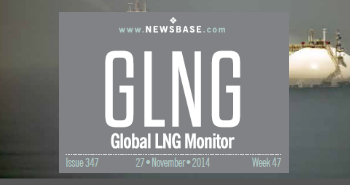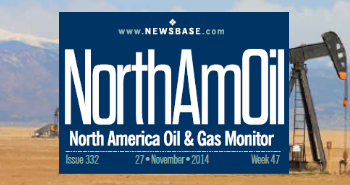INTERVIEW: US LNG enters pivotal stage
_Cropped_0.jpg)
The US LNG sector is at a pivotal stage with the lifting of the Biden administration’s pause on export licence approvals, which Charlie Riedl, executive director of the US LNG Center, told NewsBase is a strong signal that the US remains committed to being a leader in global energy markets.
Q: LNG is having a moment right now in the US with Donald Trump’s return to the White House. How do you see production growth in the short term and long term, and which markets do you expect the most growth in?
A: Long-term demand for LNG – especially US LNG – continues to grow as countries seek to bolster energy security, drive economic development and meet emissions reduction goals. In the short term, we expect continued momentum in project development, particularly as market and policy signals stabilise.
Asia remains the most significant growth region for LNG, driven by population growth, industrial demand, and clean energy targets. Europe will continue to play a key role as it looks to permanently reduce reliance on Russian natural gas.
US LNG’s flexible, market-based contracts and transparent pricing model give it a distinct competitive edge globally, while still supporting low domestic prices for US consumers (EIA).

Q: How might Trump’s creation of the Energy Dominance Council aid the US LNG sector?
A: The formation of the Energy Dominance Council signals a renewed focus on regulatory certainty – a key driver for long-term investment in LNG infrastructure.
Developing LNG terminals and pipelines involves multi-billion-dollar, multi-decade investments. For projects to move forward, companies need stable, predictable policies. One of the stated objectives of the Council is to reduce regulatory friction. If that means streamlining permitting, harmonising agency reviews and ensuring that energy policies reflect the complexity of integrated energy markets, it would be a major boost to US LNG growth and competitiveness.
Q: The US’s neighbours Canada and Mexico are entering the LNG export market, and Qatar aims to catch the US as top exporter. What advantages does US LNG have over its competitors?
A: US LNG continues to stand out due to several strategic advantages. The US benefits from an abundant and affordable natural gas resource base, with infrastructure and workforce already in place.
Equally important is the destination flexibility built into US contracts, which gives buyers control over where and when to send cargoes – a level of commercial flexibility not typically offered by state-owned exporters. Lastly, the US LNG market is driven by private investment and competition, as opposed to centralised planning, which enhances innovation and responsiveness to global market signals.
Q: What are some of the bigger hurdles facing the LNG sector right now and how do you think they can be cleared?
A: The biggest hurdle is regulatory uncertainty. Shifting policies, delayed permitting and inconsistent application of long-established rules create challenges for investment and undermine confidence in the US as a reliable supplier.
To remain competitive and meet global demand, the US needs a predictable and timely permitting framework that provides clarity for developers and assurance for buyers.
Q: LNG has long been touted as a key piece of the energy transition puzzle. What role do you expect US LNG to play in the low-carbon transition?
A: US LNG is already playing a meaningful role in displacing higher-emitting fuels like coal, backstopping intermittent renewables and lowering global carbon intensity.
As exports grow, US LNG will continue to enable cleaner, more reliable energy systems around the world, particularly in regions where renewables are not yet viable at scale. US LNG also allows developing countries to leapfrog to lower-emission technologies without compromising energy access or economic growth.
Q: Certified gas or responsibly sourced gas has seen significant growth in recent years. How do you see it evolving in the years ahead for the LNG sector?
A: US LNG producers are committed to delivering lower-emissions natural gas and responding to buyers’ demand for transparency and accountability. Certification and other forms of independent measurement, reporting and verification (MRV) are becoming an increasingly important tool to validate progress.
In 2022, 14% of US natural gas production was certified; in 2023, that figure nearly doubled to 26%. With continued investment in emissions reduction technologies and voluntary programmes, the share of certified gas is only expected to grow – especially as buyers seek differentiation based on environmental performance.
Q: The long-stalled Alaska LNG project has been making significant progress toward a final investment decision. How much of a game changer would this project be for opening up the Great Circle Route between North America and Asia?
A: Asia will remain a central hub of LNG demand in the coming decades. The ability to connect US supply to Asian markets more efficiently – without relying on chokepoints like the Panama Canal – would offer strategic and logistical advantages.
While we don’t typically comment on specific projects, increased export capacity closer to Asian markets would enhance global trade flow and offer buyers more diversified access to US gas.
Q: Finally, what are you most excited about with the US LNG sector right now?
A: This is a pivotal moment for US LNG. The lifting of the Biden administration’s pause on export licence approvals is a strong signal that the US remains committed to being a leader in global energy markets.
With nearly 10bn cubic feet (283mn cubic metres) per day of new capacity expected by 2028, the US LNG sector is poised to shape global energy trade, advance emissions goals, and strengthen America’s role as a reliable energy partner for decades to come.



Follow us online